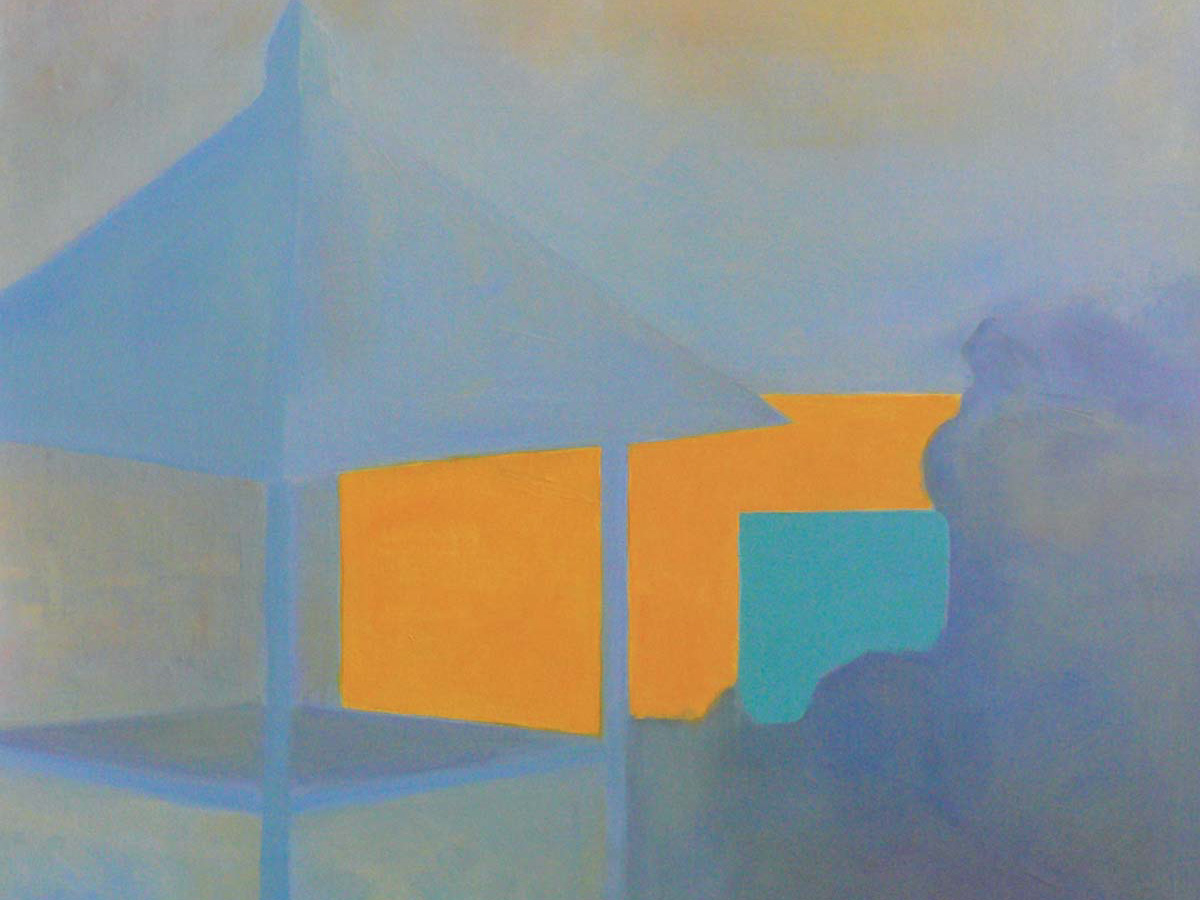Óbudai Társaskör Galéria, 2012. január
Opening: Hoffmann István, Art Advisor
Ladies and Gentlemen, Honoured Guests,
It is my pleasure to present you a remarkable fine art exhibition. Both the artist and her career are remarkable: a photographer graduate, a mother of four who has given up her promising career in psychology and turned again to fine arts and – as a student of Dora Maurer – she received an MA in Painting in 2008. The works presented here are also remarkable: twilights, patches of mist, drifting and rolling clouds in the sky. Or are they just our visual amusements that come to life by our own imagination?
Real or not real? Figurative or non-figurative? We know that these are less substantial in today’s fine art, they are merely tools to transform ideas into shape. What is important: the thought evoked by the sight. It is the artist’s duty and responsibility to choose his or her visual tools to enable the viewer to reflect upon the thoughts he or she wishes to communicate. The desire for this conceptual reflexion is present in all of Zsuzsa Kalas’ works. The artist, in her practice searching constantly for and occasionally balancing on the verge of figurative and non-figurative, provides ample space for this kind of reflection. An influence of the intimate and familiar sequencing and self-referencing of the means of creation has already been present in the artist’s early works. The initial non-figurative works – that mainly reflect on the situations and conditions in life – envisioned the changes of events with slight alteration of hues within the colours, and with the veil-like application of the paint which created both hard and soft surfaces. It is almost too obvious that the visual result of such minimalistic formal approach will be the extreme concentration of colour through which Kalas – in a unique way of monochromatic representation – depicts the happenings of the surrounding world. Being monochromatic does not mean formal homogeneity either, as the visible details that emerge from the surface show the sign of outburst. The Hungarian University of Fine Arts could not and – thanks to her tutor – did not even intend to influence Kalas’ quasi established artistic persona that was in search for the border between the visual and the formal. She continues to depict the details of the surrounding real world now well supported by her grounded technical skills. She is able to turn the portrayed palpable environment and happenings unreal, the visible into invisible by using a sole colour within each picture. However, Zsuzsa Kalas makes this unseen reality visible with her distinctive tools, as you can see as well in this exhibition.
The installations made from small sketches that are placed in the window-niches show us a real, maybe even pleasing to the eye, but definitely familiar visual world. Each piece is an artwork in its own right: 40 small pieces of art, 40 visible artefacts with invisible details. They are formal tools to create a visual world which inspire common understanding. The invisible details modestly tucked away in the window-niches become visible in pictorial forms hanging around the walls. Zooming into the details of the small images makes visible what was before invisible to our eyes, but the true perceptibility is the visual world which the artist creates and which is freed from the formal constraints to inspire us to free associations. It does not matter if this world evokes different thoughts in each person because each of us sees differently and feels differently, if emotions generate certain moods, and these moods generate different emotions. Please turn openly to these artworks that were created by an exceptional talent. I wish that you will feel their invisible grace besides their visible beauty.
Thank you very much for your attention – also for the Artist –, I hereby open the exhibition.
